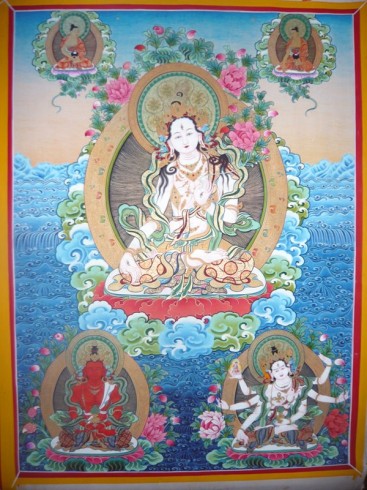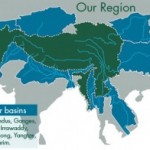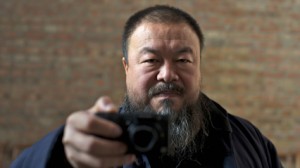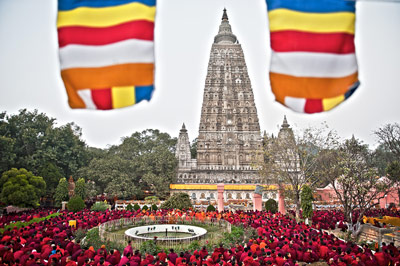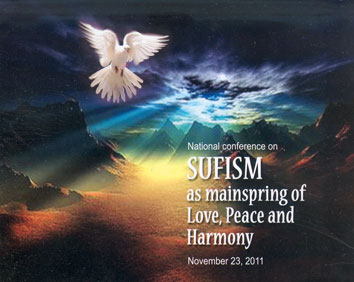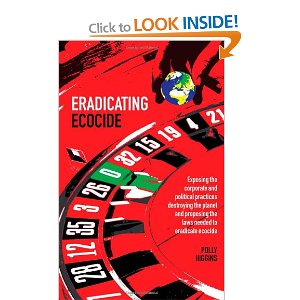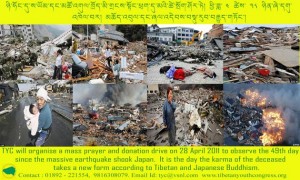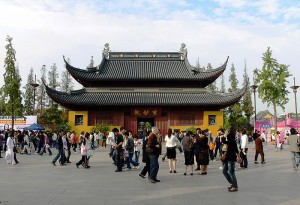TCM, Tai Chi & Health
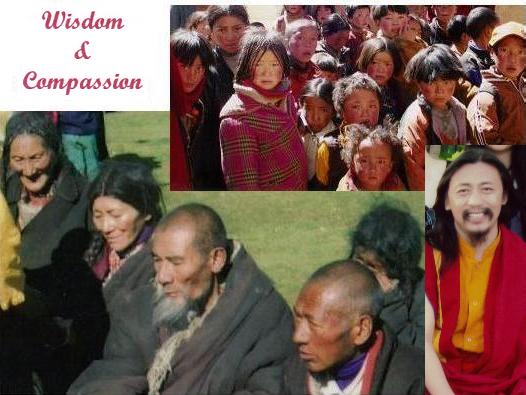
Freedom of Religion & Belief – China: Tibetan Monasteries Placed Under Direct Rule
Tibetan Yoga Center – Yoga Retreats
Contact: tibetanyogainfo@gmail.com
www.bhutanzopa.com.bt/AdventureTravel
The practice of Yoga is intimately connected to the religious beliefs and practices of both Buddhism and Hinduism. However there are distinct variations in the usage of yoga terminology in the two religions. In Hinduism, the term „Yoga“ commonly refers to the eight limbs of yoga as defined in the Yoga Sutras of Patanjali, written some time after 100 BCE, and means „yoke“, with the idea that one’s individual atman, or soul, would yoke or bind with the monistic entity which underlies everything (brahman). In the Vajrayana Buddhism of Tibet, however, the term „Yoga“ is simply used to refer to any type of spiritual practice; from the various types of tantra (like Kriyayoga or Charyayoga) to ‚Deity yoga‘ and ‚guru yoga‘. In the early translation phase of the Sutrayana and Tantrayana from India, China and other regions to Tibet, along with the practice lineages of sadhana, codified in the Nyingmapa canon, the most subtle ‚conveyance‘ (Sanskrit: yana) is Adi Yoga (Sanskrit). A contemporary scholar with a focus on Tibetan Buddhism, Robert Thurman writes that Patanjali was influenced by the success of the Buddhist monastic system to formulate his own matrix for the version of thought he considered orthodox. Read More: HERE
Early Buddhism incorporated meditative absorption states. The most ancient sustained expression of yogic ideas is found in the early sermons of the Buddha. One key innovative teaching of the Buddha was that meditative absorption must be combined with liberating cognition. The difference between the Buddha’s teaching and the yoga presented in early Brahminic texts is striking. Meditative states alone are not an end, for according to the Buddha, even the highest meditative state is not liberating. Instead of attaining a complete cessation of thought, some sort of mental activity must take place: a liberating cognition, based on the practice of mindful awareness. The Buddha also departed from earlier yogic thought in discarding the early Brahminic notion of liberation at death. Liberation for the Brahminic yogin was thought to be the realization at death of a nondual meditative state anticipated in life. In fact, old Brahminic metaphors for the liberation at death of the yogic adept were given a new meaning by the Buddha; their point of reference became the sage who is liberated in life. Read More: HERE
Dream Yoga or Milam (T:rmi-lam or nyilam; S:svapnadarśana)— the Yoga of the Dream State are a suite of advanced tantric sadhana of the entwined Mantrayana lineages of Dzogchen (Nyingmapa, Ngagpa, Mahasiddha, Kagyu and Bönpo). Dream Yoga are tantric processes and techniques within the trance Bardos of Dream and Sleep (Tibetan: mi-lam bardo) and are advanced practices of Yoga Nidra. Aspects of Dream Yoga sadhana are subsumed within the practice suite of the Six Yogas of Naropa. Read More: > HERE <
Tibetan yoga center was established to provide a program of study and practice in the Tibetan Buddhist (Vajrayana) tradition that would integrate the essence of these teachings and present them in a suitable way for practitioners in the West. The program combines the core practices relying on visualizations, yoga of channels, winds and drops, and insight into the nature of the mind (rigpa) for efficient progress on the path. The core teachings of Tibetan Yoga Center are ‚The yogas of the six bardos‘ of the Nyingma lineage of Tibetan Buddhism, summarized in the curriculum as seven courses (see the program section). The founder and master teacher of the center, Khenchen Lama Rinpoche, was at numerous occasions encouraged by his teachers to focus on helping Western students, particularly through these practices. To help bring these teachings closer to the background of Western practitioners, the program of the Tibetan Yoga Center also integrates elements of Western neuroscientific research on changes in behavior, mind and brain as a result of meditation. Building on the tradition of enlightened householder yogis in Tibet, the program of the center was developed for yogis of the current era – serious practitioners leading busy lives with work and family commitments who want to bring their spiritual practice to swift fruition to fully benefit sentient beings.
Tibetan Yoga Center operates on principles of a social business, offering teachings mostly by suggested donation and for minimal possible fees to cover expenses. The aim of the Tibetan yoga of mind is to develop universal loving kindness and compassion coupled with the ultimate wisdom of the nature of phenomena, the ultimate truth. At the basic level of achievement, one wishes happiness for oneself as well as other people.
At the medium level of achievement one realizes that the source of ultimate happiness is the understanding of the true nature of phenomena. One realizes that the most profound way to benefit sentient beings is to achieve enlightenment and works very hard towards this goal. On this path, one completely purifies his/her mental afflictions – anger, attachment, ignorance, jealousy and pride. The highest level of achievement in the Tibetan yoga of mind is the experiential understanding of our own Buddha nature – the deepest level of the mind. When one continuously sustains this realization in his/her mind stream, s/he becomes the embodiment of the union of primordial wisdom and compassion, and benefits sentient beings in limitless ways. This achievement is the essence of the Tibetan yoga and the deepest meaning of the term ’naljor‘.
TYPES OF YOGA IN TIBETAN BUDDHISM – There are six yanas (modes of spiritual practice) in Vajrayana: 1. Kriyayana, 2. Upayana, 3. Yogayana, 4. Mahayoga, 5. Anuyoga, and 6. Atiyoga. In Nyingma lineage, the main focus of practice is on Mahayoga, Anuyoga and Atiyoga.
Teaching and Practice Downloads: This section contains general teachings given by teachers of the Tibetan Yoga Center at various occasions as well as specific teachings that are part of the curriculum of the center. These teachings are available for free, but proper reference to the teachings if used as part of other materials should be included.
Previous some related #articles #videos:
Mountain Minorities and Indigenous Peoples
Yoga of Himalayas – Nuns & Communities
The Ninth Mandaean Camp Niagara Falls
UNESCO – The Tradition of Vedic Chanting
UN – Nagoya biopiracy agreement ‚is unexpected success‘
Saving the Bedouin Heritage and Biodiversity
A Call for Renewable Energy in Brazil – Belo Monte
Indigenous Australien Medicine – Bush Medicine
Build Hope – Sivananda Sevashram
ARGAN TREE – Argan Oil Morocco
Jain Tradition – Mahavir Jayanti India
Monasteries Environmental Himalayaprotection
Monks lead march to save Himalayas
Interfaith Center: Gala Dinner with Yusuf Islam
Gilgit (UNESCO Gilgit Manuscripts) Baltistan – National Conference Sufism
Bahá’í – Religion für eine neue Zeit
Introduction – Swami Vivekananda – Jnana Yoga
The Hindu approach to spiritual evolution leading to liberation or moksha or Self-realization is one of the four major paths or yogas:
-
the path of knowledge or Jnana yoga,
-
the path of mind control or Raja Yoga ,
-
the path of devotion of Bhakti yoga and
-
the path of action/work or Karma yoga.
#video Swami Vivekananda 1893 Speech at Parliament of Religions Part 1 of 4
Swami Vivekananda was the chief disciple of the 19th century saint Ramakrishna Paramahansa and the founder of the Ramakrishna Math and the Ramakrishna Mission. He is considered a key figure in the introduction of Indian philosophies of Vedanta and Yoga to the „Western“ world, mainly in America and Europe and is also credited with raising interfaith awareness, bringing Hinduism to the status of a major world religion during the end of the 19th century CE. Vivekananda is considered to be a major force in the revival of Hinduism in modern India.
He is perhaps best known for his inspiring speech which began: „Sisters and Brothers of America,“ through which he introduced Hinduism at the Parliament of the World’s Religions in Chicago in 1893.
The Council for a Parliament of the World’s Religions works to cultivate harmony among the world’s religious and spiritual communities to achieve a just, peaceful and sustainable world.
The first Parliament of Religions was held at the 1893 Chicago Columbian Exposition, and was the first formal meeting of the religious East and West. In 1988 the Council for a Parliament of the World’s Religions (CPWR) was founded to organize a centennial celebration of the original Parliament. Since 1993, three Parliaments have been held in Chicago, Cape Town, Barcelona and in 2009 the most recent Parliament was held in Melbourne, Australia.
Dr. Joachim Reinelt: Zur Zeit des indischen Mittelalters wanderten in weiten Teilen Indiens und Tibets tantrische Mystiker umher, die Nathas, Nathayogis oder Nathasiddhas genannt wurden. Sie praktizierten und lehrten Hatha- und Kundaliniyoga und hatten großen Einfluss auf das religiöse Leben der Menschen.
Gorakshanatha Saivism: Gorakhnath or Gorakshanatha Saivism is also known as Siddha Siddhanta and Nath tradition. It was founded by Gorakshanatha (Gorakhnath) who lived about 10th century AD. He is believed to be 3rd, 4th or 5th in a line of 12 prominent teachers of this tradition, which has followers in both Buddhism and Hinduism.
He was said to be a disciple of Matsyendranatha who was from in Nepal. Followers of this sect believe that knowledge of this tradition was received by Matsyendranath directly from Siva himself. Gorakshanatha is credited with such works as Siddha Siddhanta Paddhathi and Viveka Martanda. He composed them in Hindi. He also created 12 monastic orders across Northern India in an effort to preserve the Adinatha tradition. Other important works of this tradition are Hathayoga Pradipika, Gheranda Samhita, Siva Samhita and Jnanamrita.
History of the Nathas – The history of ancient Indian sadhu texts reveals a succession of several main groups. There were the Sadhs, Yatis, Siddhas, Nathas, Pashupatis, Sant-Mats, Dasnamis and Nagas. Apart from these, many small sadhu sects have existed and played their part in the great stream of Indian life. In early history, it would appear that some sects were interwoven with others, and some merged or developed into other sects. Some thus became extinct, and others are still with us.
Full Article: http://www.saivism.net
http://www.facebook.com/parliamentofreligions
http://en.wikipedia.org/wiki/Swami_Vivekananda
Bhutan http://en.wikipedia.org/wiki/Gross_national_happiness
UN – The Challenge of Human Rights and Cultural Diversity
UNESCO – Intangible Cultural Heritage
UN – Nagoya biopiracy agreement ‚is unexpected success‘
http://www.twnside.org.sg/title2/books/The.Road.to.an.Anti-Biopiracy.Agreement.htm
Amnesty International – What are economic, social and cultural rights?
*************************************
China: Tibetan Monasteries Placed Under Direct Rule
(New York) – The Chinese government has ended a key policy of allowing Tibetan monasteries to be run by monks who comply with government regulations and have instead introduced a system that will place almost every monastery in Tibet under the direct rule of government officials who will be permanently stationed in each religious institution, Human Rights Watch said today.
The new system now requires an unelected „Management Committee“ – also referred to as zhusi danwei/gongzuozu („monastic government work-unit“)- to be established in every monastery, with up to 30 lay officials stationed in each monastery, depending on the size of the institution, according to a February 15, 2012 article in the government-run Global Times. The new „Management Committees“ will run the monasteries and will have authority over the previous „Democratic Management Committees,“ which will now be responsible for rituals and other matters.
The freedom to leave or discontinue membership in a religion or religious group —in religious terms called „apostasy“ —is also a fundamental part of religious freedom, covered by *Article 18 of the Universal Declaration of Human Rights.[2]
Freedom of religion is a principle that supports the freedom of an individual or community, in public or private, to manifest religion or belief in teaching, practice, worship, and observance; the concept is generally recognized also to include the freedom to change religion or not to follow any religion.[1]
#video Meeting with Special Rapporteur on Freedom of Religion or Belief, Heiner Bielefeldt As always saying something on the topic of freedom of religion or belief, to say it again, the most shocking experience when dealing with case of violations of freedom of religion is the extreme manifestation and degree of hatred “ http://www.youtube.com/watch?v=81qyyKzntJw
http://www.hreoc.gov.au/human_rights/religion/index.html
http://en.wikipedia.org/wiki/Freedom_of_religion
http://www.ohchr.org/EN/Issues/FreedomReligion/Pages/FreedomReligionIndex.aspx
February 29, 2012
Australian Broadcasting Corporation – Exiled PM wants ‚fact finding‘ mission in Tibet
March 3, 2012
UN Human Rights Chief asked when she would visit Tibet
Mar 6, 2012
UN calls on China to stop forced settlement of Tibetan Nomads
8 March 2012
“Unfinished progress” – UN expert examines food systems in emerging countries reports* on China, Mexico and South Africa to the Human Rights Council. In China, local-level authorities often have allowed land-grabbing at the expense of poor rural households. And between 50 and 80 per cent of the 2.25 million nomads on the Tibetan plateau may be relocated into settlements close to rural cities, overhauling the food and farming practices of this vulnerable community as part of a programme to abandon nomadic life and modernize agriculture. ( Latest Water UN Report – World Consumption of modern agriculture on fresh water by 70% )
chinadialogue Tibetan herders are struggling to adjust to sedentary life on the edge of the city of Golmud. Xia Liwei visited one family and listened to their story. http://www.chinadialogue.net/–Who-are-these-people-now
chinadialogue As China seeks to protect a delicate corner of Qinghai, 50,000 herders have been moved off the grasslands. Ill-prepared for urban life, they face a bleak future, write Guan Guixia and Suonan Wangjie. http://www.chinadialogue.net/–Hard-times-for-eco-migrants
TIBETAN NOMADS Tibetan herder with a yak Nomadic herders are known as drokpa. They make up about 25 percent of Tibetans in Tibet. In some Tibetan counties they make up 90 percent of the population. http://factsanddetails.com/china.tibetan nomads
‘Obesogenic’ food systems & Right to food in emerging countries
OLIVIER DE SCHUTTER
U.N. SPECIAL RAPPORTEUR
ON THE RIGHT TO FOOD
Newsletter 12 March 2012
Here is the latest news from the United Nations Special Rapporteur on the Right to Food, Olivier De Schutter. You will find more information on our website.
In the spotlight
‘Obesogenic’ food systems must be reformed
“The West is exporting diabetes and heart disease to developing countries, along with the processed foods that line the shelves of global supermarkets,” warned the Special Rapporteur, calling for an urgent response to the public health disaster of poor nutrition.
On March 6th the UN expert presented an official report, entitled ‘The right to an adequate diet: the agriculture-food-health nexus’ to the UN Human Rights Council.
Instead of medicalizing diets, we must tackle the systemic problems that generate poor nutrition in all its forms, he urged, calling for the taxation of unhealthy products, regulation of foods high in saturated fats, salt and sugar and the way they are marketed, reform of wrong-headed agricultural subsidies, and support for local food systems.
Read the press release or the report and recommendations.
“Unfinished progress”
– UN expert examines food systems in emerging countries
[8 March 2012] GENEVA – “The food systems of emerging countries are at a major crossroads. Millions of people have been lifted out of poverty, yet whole communities have been left behind,” warned Olivier De Schutter, the United Nations Special Rapporteur on the right to food, after presenting his reports* on China, Mexico and South Africa to the Human Rights Council.
“As many as 19 million Mexicans and 12 million South Africans remain food insecure, and China’s rural dwellers are up to six times poorer than urban populations,” the expert said, calling on emerging countries to act now to lay the foundations for fair and sustainable food systems by implementing the following actions:
Mr. De Schutter urged emerging economies to protect the rights of land users, especially minority and vulnerable groups, and to establish in law the right to food, so it can be rapidly translated it into national strategies and institutions. He also advised supporting smallholder agriculture in the face of mega-development projects, and stopping soil and water degradation through a massive shift to agroecological practices. Likewise, the UN expert suggested the adoption of a strategy to tackle rising obesity.
| Read more… |
“Emerging countries face the huge task of feeding fast-growing populations whose increasing wealth is exerting new pressures on scant resources. They must secure and strengthen their food production bases as a matter of urgency; and they will only do so by working with farmers and their organizations, rather than against them,” he urged.
END
(*)Check the reports: China, Mexico and South Africa.

FOOD: WTO „must address“ food security
UPDATE 30.01.2012 Haircut Negotiations – Hedge Funds Bet on Profits from Greek Debt Talks SPIEGEL ONLINE – http://www.spiegel.de/international/topic/debt_crisis
The negotiations over the Greek debt haircut are becoming increasingly suspenseful, with euro-zone finance ministers and the IMF pushing investors to accept greater losses. Hedge funds, more than any others, stand to profit, and are betting that the voluntary debt rescheduling will fail. By Stefan Kaiser http://www.facebook.com/spiegelinternational
Coming Events:
7 February 2012: European Economic and Social Committee sustainability conference
Olivier De Schutter will address Workshop 1, entitled „food, water and energy for everyone“, held between 4.30 and 6.00 pm, of the Conference of the European Economic and Social Committee (EESC) Go sustainable, be responsible! European civil society on the road to Rio+20.
30 January 2012: No enough food, energy for World as population increases: U.N. report | Morocco World News http://moroccoworldnews.com
30 January 2012: With new blueprint in hand, Ban calls for action to chart more sustainable future http://www.un.org/apps/news/sustainable development
http://www.irinnews.org/Report WTO
http://www.ourworldisnotforsale.org/
“ Trade and food security is in effect a WTO issue, and so there is great frustration within the UN that this enormously restricts the role of, for example, the Food and Agriculture Organization-based Committee on Food Security „
Olivier de Schutter, UN Human Rights Council’s Special Rapporteur on the Right to Food, says: “Food security is the elephant in the room, which WTO [the World Trade Organization] must address”, pointing out that food import bills had soared by a third for poor countries this year.
WTO defending an outdated vision of food security [16 December 2011] Geneva – „Globalization creates big winners and big losers. But where food systems are concerned, losing out means sinking into poverty and hunger. A vision of food security that deepens the divide between food-surplus and food-deficit regions, between exporters and importers, and between winners and losers, simply cannot be accepted.
Food security hostage to trade in WTO negotiations: UN right to food expert [16 November 2011] Geneva – „The world is in the midst of a food crisis which requires a rapid policy response. But the World Trade Organisation (WTO) agenda has failed to adapt, and developing countries are rightly concerned that their hands will be tied by trade rules.”
Is the Doha round delivering on poverty?
Food aid on the back burner as WTO talks collapse
Some issues WTO needs to address in agriculture:
Ceilings on subsidies: Current ceilings on how much the US and the EU can spend on subsidies that distort trade are still rather high
Cotton subsidies: The US has still not fully complied with a WTO ruling in 2009 to remove subsidies for its cotton producers. African farmers could have gained from a 3.5 percent average increase in world cotton prices, if the US had cut subsidies.
Biofuel Subsidies : Not covered yet. A new study found that US ethanol subsidies may have artificially inflated maize prices by as much as 17 percent in 2011. Source: ICTSD
Some Further Sources such as http://www.un.org/en/documents/udhr/index.shtml
Read http://www.srfood.org/ Press release, „Eco-Farming Can Double Food Production in 10 Years, says UN Report“, 8 March 2011.
FARMAfrica FARM-Africa http://www.farmafrica.org.uk
Research by American Prof of International Development shows that small farms in Africa could be the solution to hunger http://www.stanforddaily.com/2012/01/13/
http://www.righttofood.org/ http://en.wikipedia.org/Right_to_food
http://cesr.org/index.php Center for Economic and Social Rights
http://www.facebook.com/World Fair Trade Organization (WFTO)
The G20 & Food Security – missing the big picture? World Trade
https://www.facebook.com/boellstiftung
http://www.business-humanrights.org/Categories/Issues/Other/Righttofood
http://www.stwr.org/imf-world-bank-trade/
http://en.wikipedia.org/wiki/Millennium_Development_Goals
http://donttradeourlivesaway.wordpress.com/
http://www.oaklandinstitute.org/issues
http://farmlandgrab.org/Olivier De Schutter: “Principles for responsible investment in agriculture”
http://www.ourworldisnotforsale.org/en/signon/stop-wto-s-doha-development-round-and-other-FTAs
The right to food, and its variations, is a human right derived from the International Covenant on Economic, Social and Cultural Rights (ICESCR). The UN Special Rapporteur on the right to food in 2002 defined it as follows: http://en.wikipedia.org/wiki/Right_to_food
http://www.amnesty.org/en/economic-social-and-cultural-rights
Join the energy [r]evolution! http://www.energyblueprint.info/ The report: ‘Energy [R]evolution: A Sustainable World Energy Outlook’, provides a detailed practical blueprint for cutting carbon emissions while achieving economic growth by replacing fossil fuels with renewable energy and energy efficiency. This phase-out of fossil fuels offers substantial benefits such as energy security, independence from world market fuel prices as well as the creation of millions of new green jobs.

Celebrate the 2012 Sundance Film Festival From Anywhere
http://www.sundance.org/festival
http://www.sundance.org/stories/blog
http://www.sundance.org/programs/native-film
“Storytellers broaden our minds: engage, provoke, inspire, and ultimately, connect us.”
—Robert Redford, President and Founder
The Sundance Film Festival is a film festival that takes place annually in Utah, in the United States. It is the largest independent cinema festival in the United States. HERE
Charity biography #433 Robert Redford has addressed environmental issues in documentaries and film for over 30 years. Read more: http://www.looktothestars.org/celebrity/443-robert-redford
Sundance Institute is a nonprofit organization dedicated to the discovery and development of independent artists and audiences. Through its programs, the Institute seeks to discover, support, and inspire independent film and theatre artists from the United States and around the world, and to introduce audiences to their new work.
Since 1981, Sundance Institute has evolved to become an internationally-recognized nonprofit organization that actively advances the work of risk-taking storytellers worldwide. Originally founded by Robert Redford in the mountains of Sundance, Utah, Sundance Institute has always provided a space for independent artists to explore their stories free from commercial and political pressures. By providing year-round creative and financial support for the development of original stories for the screen and stage, Sundance Institute remains committed to its mission to discover and develop independent artists and audiences across the globe.
#VIDEO 2012 Festival Kickoff http://www.youtube.com/sff
Sundance Film Festival Director John Cooper, and Director of Programming Trevor Groth, share some of the great things about to happen at the 2012 Sundance Film Festival.
Artist Programs
http://www.sundance.org/programs/
Through year-round support, including a series of Labs and Fellowships for screenwriters, directors, documentarians, producers, composers, and theatre artists, the Institute’s artist programs have supported more than 5,000 artists and their films.
Feature Film
The longest-running of Sundance Institute’s artist development programs, the Feature Film Program (FFP) was founded in 1981 and has since supported more than 500 independent filmmakers whose distinctive, singular films have engaged audiences worldwide. We hope to embrace the unique vision of each filmmaker we support and encourage a rigorous creative process with a focus on original storytelling. Led by Michelle Satter, each year the Program advances the work of as many as 65 emerging filmmakers from the U.S. and around the world through a year-round continuum of support from development, to production and postproduction, all the way through to festival strategy and creative marketing/distribution.
#video http://www.aiweiweineversorry.com
http://filmguide.sundance.org/ai_weiwei_never_sorry
Ai Weiwei is China’s most famous international artist, and its most outspoken domestic critic. Against a backdrop of strict censorship and an unresponsive legal system, Ai expresses himself and organizes people through art and social media. In response, Chinese authorities have shut down his blog, beat him up, bulldozed his newly built studio, and held him in secret detention.
AI WEIWEI: NEVER SORRY is the inside story of a dissident for the digital age who inspires global audiences and blurs the boundaries of art and politics. First-time director Alison Klayman gained unprecedented access to Ai while working as a journalist in China. Her detailed portrait provides a nuanced exploration of contemporary China and one of its most compelling public figures.
http://www.financialtaskforce.org/2011/12/07/an-artists-stand
Ai Weiwei is known for many things—great architecture, subversive in-your-face art, and political activism. He has also called for greater transparency on the part of the Chinese state. Director Alison Klayman chronicles the complexities of Ai’s life for three years, beginning with his rise to public prominence via blog and Twitter after he questioned the deaths of more than 5,000 students in the 2008 Sichuan earthquake. The record continues through his widely publicized arrest in Beijing in April of 2011. As Ai prepares various works of art for major international exhibitions, his activism heats up, and his run-ins with China’s authorities become more and more frequent.
In this unprecedented look at Ai and those close to him, Klayman’s camera captures his forthrightness and unequivocal stance. She gives a larger picture of the artist as an individual, a symbol of China’s oppression, and a powerful voice against a country that still denies its citizens many basic freedoms. – K.Y.
http://www.sundance.org/filmforward/destinations
http://www.sundance.org/filmforward/destination/china-2012/
Sundance Spotlights Spacey’s Wall Street Boss,
Al Pacino’s Cop
http://www.bloomberg.com/news/2012-01-17/austerity-wrong-way-to-fight-eu-crisis-stiglitz.html
Two movies about the *financial crisis — a drama starring Kevin Spacey and a documentary featuring Nobel Prize-winner Joseph Stiglitz — will be showcased at the Sundance Film Festival opening today in Utah.
On China, Stiglitz said an easing in its economic expansion to 7 percent to 8 percent is in some sense probably a “good thing.” He later told reporters at a Hong Kong briefing growth in the world’s second-largest economy is now more “sustainable.”
http://genevalunch.com/blog/2011/11/29/swiss-chinese-free-trade-good-progress-made
http://en.wikipedia.org/wiki/List_of_bilateral_free_trade_agreements
Not to be confused with Free market or Fair Trade. http://en.wikipedia.org/wiki/Free_trade
In “Margin Call,” Spacey plays an executive at a troubled Wall Street investment firm during the early days of the economic meltdown. “The Flaw,” directed by British filmmaker David Sington, explores the causes of the crisis through interviews with leading economists, Wall Street insiders and victims of the Great Recession.
Celebrate the 2012 Sundance Film Festival From Anywhere
Digital Initiatives Bring the Festival to You!
Livestream Events │ Exclusive Online Content │Social Media
We’re working to improve your experience on our site. Please click to offer your feedback.
http://www.sundance.org/video/live/ LIVE Streaming
http://www.facebook.com/sundance
http://twitter.com/sundancefest
Live Webcasts from the Kalachakra Teaching
There will be live webcasts from the Kalachakra Teaching in Bodh Gaya, Bihar, India, from January 1-10, 2012. His Holiness the Dalai Lama will be teaching in Tibetan and there will be live webcasts in English, Chinese, Russian and Tibetan languages.
All times Indian Standard Time (GMT+5.30)
January 1: Short Teaching
His Holiness will give a short teaching.
Time: 1:00pm – 3:00pm
January 4-6: Preliminary Teachings
His Holiness will give preliminary teachings on Kamalashila’s „The Middling States of Meditation (gomrim barpa)“, Gyalsey Thokme Sangpo’s „37 Practices of A Bodhisattva (laklen sodunma)“, Geshe Langri Thangpa’s „Eight Verses of Training the Mind (lojong tsik gyema)“, Nagarjuna’s „The Praise to the World Transcendent (jigten ley deypar toepa)“ and Khunu Lama Tenzin Gyaltsen’s „The Precious Lamp in Praise of Bodhicitta (jangchup sem kyi toepa rinchen drolma)“.
Times: 1:00pm – 3:30pm each day
January 10: Long life empowerment and offering
A long life empowerment (tsewang) and a ceremony offering prayers for the long life of His Holiness the Dalai Lama will be performed.
Time: 9:00am – 11:00am (approximate time)
January 10: Ceremony honoring His Holiness the Dalai Lama
There will be a public felicitation ceremony for His Holiness.
Time: 1:30pm – 3:00pm
Live English language webcast can be viewed here.
Live Chinese language webcast can be viewed here.
Live Russian language webcast can be viewed here.
Live Tibetan language webcast can be viewed here.
More information and a full schedule of events at:
http://www.kalachakra2012.org/
http://www.facebook.com/DalaiLama
For times in your region 1:00pm Indian Standard Time (IST) on January 1st in India is the same as 7:30am on January 1st in London, England.
http://tibetanyouthcongress.org
http://wiki/List_of_organizations_of_Tibetans_in_exile
http://www.studentsforafreetibet.org
http://www.tchrd.org/ Human Rights Situation in Tibet
https://www.facebook.com/tibetnewsonline
http://www.facebook.com/Tibet Sites
Further Sources #articles #videos #social projects #buddhism:

NATIONAL CONFERENCE ON „SUFISM“
Conference on Sufism „as mainspring of Love, Peace and Harmony“
Opening Date: Wednesday, 23 November 2011
Closing Date: –
Additional Information : at 3.00 p.m at Lok Virsa Islamabad
The Gilgit Agency was a political unit of British India, which administered the northern half of the Princely state of Jammu and Kashmir. The Gilgit Agency was created in 1877 and was overseen by a political agent of the Governor-General of British India. The seat of the agent was Srinagar. In 1935, the Gilgit Agency leased the territory comprising the agency from the Maharaja of Jammu and Kashmir, Hari Singh, for a period of sixty years. This lease and the Gilgit Agency ceased to exist when Pakistan and India became independent countries in 1947. HERE
LOK VIRSA – AN INTRODUCTION :
Lok Virsa (The National Institute of Folk & Traditional Heritage) works towards creating an awareness of cultural legacy by collecting, documenting, disseminating and projecting folk & traditional heritage. Surveys and documentation of traditional culture is central to the objectives of the institute. The Lok Virsa delve into and surveys are conducting by mobile recording and filming units. Dedicated individuals undergo the rigorous field work, to bring back valuable results to the central archives and production facilities housed at the Lok Virsa complex at Garden Avenue Shakarparian Hills Islamabad.
Lok Virsa is an affiliate member of UNESCO, The World Craft Council, International Council of Music, The Asian Cultural Centre for UNESCO, The International Council of Museums and similar other world organizations for the dissemination of art products abroad.
http://www.rferl.org/section/Pakistan
http://www.facebook.com/Gilgit Baltistan
http://www.facebook.com/kashmirsufismsociety
http://www.facebook.com/pakistanyouthforumpage
http://hunzalandslide.blogspot.com/
http://www.facebook.com/Indian Youth Climate Network(IYCN)
http://de.wikipedia.org/Hunza Burusho people, Hunza-Mythos
http://en.wikipedia.org/Former State of Hunza (princely state)
http://www.facebook.com/International Organization of Folk Art (IOV)
https://www.facebook.com/unesco Educational, Scientific and Cultural Organization (UNESCO)
Zamana is a public interest space for learning, reflection, and action on Pakistan.
Explore: Whose Land? Whose Food?
In its first issue, Zamana delves into the thorny subject of land and food rights in Pakistan. The focus is prompted by recent news reports that amidst rising hunger and food crises, the Government of Pakistan plans to give away thousands of acres of farmland to Saudi Arabia and other foreign investors. Zamana invites more commentaries on this issue. Please send your perspective to info @ zamana.org. Further Infos: http://farmlandgrab.org/
Act: Our Land, Our Food, Pakistan is not for Sale
Sign the petition to raise your voice against land leasing to foreign clients.
UPDATE 23.11.2011 Final Declaration: Stop Land-Grabbing Now!
The Oakland Institute http://www.oaklandinstitute.org
More than a hundred civil society organizations have submitted a document entitled „Time to Act – Agriculture and Food Security and Rio+20“ as input to the UN Conference on Sustainable Development (the Rio+20 conference). The submission outlines the key actions that are needed to achieve viable food systems based on agroecological and other forms of sustainable production.
http://www.facebook.com/oak.institute
http://www.ourworldisnotforsale.org/members
http://www.facebook.com/road2rio20
A global youth mobilization towards the UN Conference on Sustainable Development (Rio+20).
http://www.timetoactrio20.org/ 20 years after the Rio Earth Summit, the planet is in a deeper environmental, energy and financial crisis.The United Nations Conference on Sustainable Development (UNCSD) in Rio de Janeiro in 2012 might be just another high-level conference stating the need to eradicate hunger and poverty, stop climate change, the loss of biodiversity, soil erosion and other serious environmental problems – and then, after the conference, life goes on as before. But it can be different. It has a historical opportunity to make important decisions and agree on actions that actually do eradicate hunger and poverty, and save the environment. It’s time to act!
Many civil society organizations have signed on to a document with proposals on issues linked to food and agriculture for the Rio2012-conference. Download the document (PDF) HERE. Download the document in Word format (doc) HERE.
If you have comments and suggestions for changes in this document, and if your organization wants to support the document, please send a mail to rio2012agcso@gmail.com
The document is available in English, Spanish, French and German
UPDATE 24.11.2011 @guardian – Africa’s great ‚water grab‘ Foreign investors aren’t just after land in Africa. Access to water is essential – which can bring them into direct competition with the needs of local communities.
This article is about a right to water as a human right under international law. For a discussion of water usage laws in common law, see Water right. http://en.wikipedia.org/wiki/Right_to_water
WORLD CONFERENCE ON HUMAN RIGHTS
Vienna, 14-25 June 1993
VIENNA DECLARATION AND PROGRAMME OF ACTION
Note by the secretariat
Attached is the text of the Vienna Declaration and Programme of Action, as adopted by the World Conference on Human Rights on 25 June 1993.
1. The World Conference on Human Rights reaffirms the solemn commitment of all States to fulfil their obligations to promote universal respect for, and observance and protection of, all human rights and fundamental freedoms for all in accordance with the Charter of the United Nations, other instruments relating to human rights, and international law. The universal nature of these rights and freedoms is beyond question.
… Emphasizing that the Universal Declaration of Human Rights, which constitutes a common standard of achievement for all peoples and all nations, is the source of inspiration and has been the basis for the United Nations in making advances in standard setting as contained in the existing international human rights instruments, in particular the International Covenant on Civil and Political Rights and the International Covenant on Economic, Social and Cultural Rights…
http://www.unhchr.ch/huridocda/huridoca.nsf/%28symbol%29/a.conf.157.23.en
http://www.amnesty.org/en/economic-social-and-cultural-rights #video
Eradicating Ecocide – Rights for the Planet
www.world-economy-and-development.org
www.environmentallawresource.com
www.stwr.org/climate-change-environment
The neologism ecocide can be used to refer to any large-scale destruction of the natural environment or over-consumption of critical non-renewable resources. An early reference in 1969 described it as „Ecocide – the murder of the environment – is everybody’s business.“ Ecocide is also a term for a substance that kills enough species in an ecosystem to disrupt its structure and function. Another example would be a high concentration of pesticide due to a spillage. U.S. environmental theorist and activist Patrick Hossay argues that the human species is committing ecocide, via industrial civilization’s effects on the global environment. Much of the modern environmental movement stems from this belief as a precept.
In April 2010 UK Lawyer Polly Higgins proposed to the United Nations that ecocide be recognised as an international Crime Against Peace alongside Genocide, Crimes of Humanity, War Crimes and Crimes of Aggression, triable at the International Criminal Court. More
Polly Higgins is an international environmental lawyer. She believes that change can happen very quickly. She understands how law can act as a catalyst for global change.
Did you know that every government can implement laws overnight? George Bush used emergency laws to shore up Wall Street at the 11th hour and the UK have used them to pass laws on terrorism. It all depends on whether there is a national emergency. Well, now we have an international emergency. So we can do the same worldwide, and put in place an international law of Ecocide. In truth, it’s not that difficult. All that is required is for every nation to agree to vote on it, and then put it to the vote. It’s that simple. Really.
Proposed definition: Ecocide is the extensive destruction, damage to or loss of ecosystem(s) of a given territory, whether by human agency or by other causes, to such an extent that peaceful enjoyment by the inhabitants of that territory has been severely diminished.
In April 2010 a second international legislative proposal was submitted to the United Nations: for the crime of Ecocide to be implemented as a 5th Crime Against Peace under the Rome Statute.
The proposal of Ecocide as a crime of strict liability would impose a prohibition of environmental damage or destruction over a certain size, duration and severity to apply during peace time. To read more about the proposal, see thisisecocide.com
http://www2.ohchr.org/english/issues/environment
„ERADICATING ECOCIDE“ by Polly Higgins: www.amazon.co.uk/Eradicating-Ecocide-Polly-Higgins
The Millennium Development Goals (MDGs) are eight international development goals that all 192 United Nations member states and at least 23 international organizations have agreed to achieve by the year 2015. They include eradicating extreme poverty, reducing child mortality rates, fighting disease epidemics such as AIDS, and developing a global partnership for development. More
Goal 7: Ensure environmental sustainability
Target 7A: Integrate the principles of sustainable development into country policies and programs; reverse loss of environmental resources
Target 7B: Reduce biodiversity loss, achieving, by 2010, a significant reduction in the rate of loss
The Convention on Biological Diversity (CBD), known informally as the Biodiversity Convention, is an international legally binding treaty. The Convention has three main goals:
1. conservation of biological diversity (or biodiversity);
2. sustainable use of its components; and
3. fair and equitable sharing of benefits arising from genetic resources
In other words, its objective is to develop national strategies for the conservation and sustainable use of biological diversity. It is often seen as the key document regarding sustainable development.
The Convention was opened for signature at the Earth Summit in Rio de Janeiro on 5 June 1992 and entered into force on 29 December 1993.
2010 was the International Year of Biodiversity. The Secretariat of the Convention on Biological Diversity is the focal point for the International Year of Biodiversity. At the 2010 10th Conference of Parties (COP) to the Convention on Biological Diversity in October in Nagoya, Japan, the Nagoya Protocol was adopted.
On 22 December 2010, the UN declared the period from 2011 to 2020 as the UN-Decade on Biodiversity. They, hence, followed a recommendation of the CBD signatories during COP10 at Nagoya in October 2010. More
- http://en.wikipedia.org/Equator_Principles
- www.globalwitness.org www.biodiversityhotspots.org
- www.worldviewofglobalwarming.org
- www.endpoverty2015.org UN Millenium Campaign
- http://farmlandgrab.orgwww.biofuelwatch.org.uk
- Meet Ecocide is a Crime, studies at fb
- Meet United Nations Millennium Campaign, friends, fans
(mehr …)
Relay Hunger Strike to Kirti Gompa
Kirti Gompa (Tibetan: ཀིརྟི་དགོན་པ།), (sometimes referred to as Ge’erdengsi or Gerdeng Monastery), properly known as Kirti Kalari Gon Tashi Lhundrub, is a Gelugpa monastery on the northwestern edge of Ngawa City, the main city in Ngawa County, within the Ngawa Tibetan and Qiang Autonomous Prefecture in northwestern Sichuan, China. It is located on the Tibetan plateau at an elevation of 3,200 metres (10,499 ft.) Read More: > HERE <
The Fukushima I nuclear accidents (福島第ä��原子力発電所ä��故, Fukushima Dai-ichi are a series of ongoing equipment failures and releases of radioactive materials at the Fukushima I Nuclear Power Plant, following the 9.0 magnitude Tōhoku earthquake and tsunami on 11 March 2011.The plant comprises six separate boiling water reactors maintained by the Tokyo Electric Power Company (TEPCO). This accident is the largest of the 2011 Japanese nuclear accidents arising from the Tōhoku earthquake and tsunami, and experts consider it to be the second largest nuclear accident after the Chernobyl disaster, but more complex as all reactors are involved. Read more: > HERE <
TYC will organise a mass prayer and donation drive on 28th April 2011 to observe the 49th day since the massive earthquake shook Japan.
Relay Hunger Strike to demand immediate withdrawal of Chinese troops from Kirti Monastery in Tibet – TYC launched today indefinite Relay Hunger Strike near Main Temple (Tsuklagkhang) to protest against the critical situation in and around Kirti Monastery in Ngaba, Tibet. 15 monks from Institute of Buddhist Dialectics today participated in the first batch of hunger strike. We are also collecting signatures at the site on the petition demanding immediate withdrawal of Chinese troops. All Regional chapters of TYC has also been instructed to launch relay hunger strike. Please see the statement on this campaign.
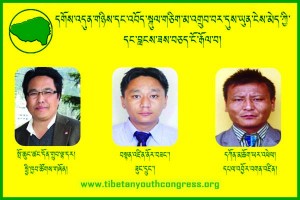
www.studentsforafreetibet.org against Chinas „Re – Education Programme“ and for Human Rights 4 All
- www.tibetoralhistory.org
- Save Mountain Minorities, Tibetan Nomads, Indigenous People <
- www.uranium-network.org www.minesandcommunities.org
- http://stopminingtibet.com www.meltdownintibet.com
- Nuclear Safety: http://www.barentsobserver.com/index.php?cat=156838
- IPPNW Int. Physicans to prevent Nuclear War at fb <
- Meet International friends of Tibetan Youth Congress at fb <
- Meet Students for a free Tibet at fb <
- http://www.amnesty.org/en/economic-social-and-cultural-rights <
- Meet Human Rights Watch International at fb <
CONFERENCE: The City of Kashgar
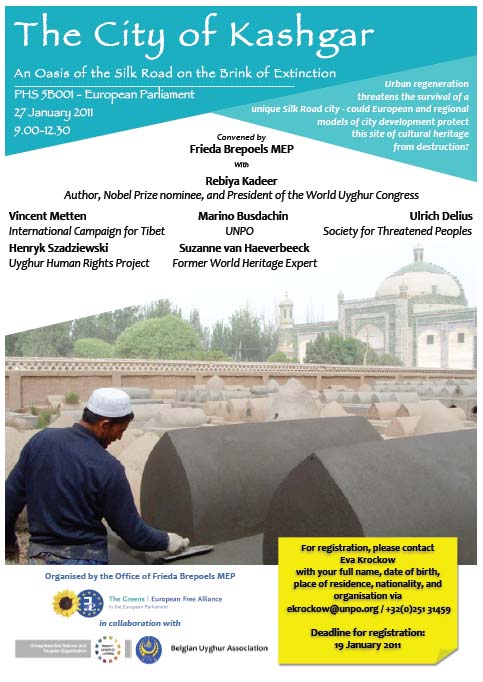
www.rferl.org Radio Free Europe
The Silk Road (or Silk Routes) is an extensive interconnected network of trade routes across the Asian continent connecting East, South, and Western Asia with the Mediterranean world, as well as North and Northeast Africa and Europe. In recent years, both the maritime and overland Silk Routes are again being used, often closely following the ancient routes.Read More: > HERE <
The Uyghur (Uyghur: ئۇيغۇر, ULY: Uyghur; simplified Chinese: 维吾尔; traditional Chinese: 維吾爾) are a Turkic ethnic group living in Eastern and Central Asia. Today, Uyghurs live primarily in the Xinjiang Uyghur Autonomous Region in the People’s Republic of China. An estimated 80% of Xinjiang’s Uyghurs live in the southwestern portion of the region, the Tarim Basin. The largest community of Uyghurs outside Xinjiang in China is in Taoyuan County, in south-central Hunan province.Outside of China, large diasporic communities of Uyghurs exist in the Central Asian countries of Kazakhstan, Kyrgyzstan, and UzbekistanSmaller communities are found in major cities in Afghanistan, Pakistan, and Turkey. Read More: > HERE <
The City of Kashgar: An Oasis of the Silk Road on the Brink of Extinction – Two years into Beijing’s ‘Kashgar Dangerous House Reform’, and the Old City of Kashgar in East Turkestan, or China’s Xinjiang Uyghur Autonomous Region (XUAR), faces near total destruction.
There is a pressing need to assess the damage incurred, implications for the region’s Uyghur population, and to identify ways in which damage can be mitigated.
To address this urgent need, Ms Frieda Brepoels MEP will convene a conference, ‘Kashgar: An Oasis of the Silk Road on the Brink of Extinction’ at the European Parliament in Brussels from 9.00–12.30 on 27 January 2011 in collaboration with the Unrepresented Nations and Peoples Organization (UNPO) and the Belgian Uyghur Association. For more information on the event please refer to http://www.unpo.org/article/12104
After opening remarks by Rebiya Kadeer, Nobel Peace Prize nominee and President of the World Uyghur Congress, international experts including Henryk Szadziewski, Manager of the Uyghur Human Rights Project, Washington, and Ulrich Delius, German Society for Threatened Peoples, will provide a rare glimpse into one of the defining cultures of Central Asia and an internationally significant Silk Road city that has witnessed Tamerlane, Genghis Khan and Marco Polo but is excluded from applications for UNESCO World Heritage status due to political reasons.
In the keynote address for the Oslo Freedom Forum 2010, Uyghur leader Rebiya Kadeer reveals the plight of her people under the repressive Chinese government. Like the Tibetans, the Uyghurs are living in an open prison, forced to abandon their culture, subjected to torture, imprisonment, and execution for speaking out.
Drawing on the historical lessons taught by the international case studies of Lhasa and Bruges, Vincent Metten, EU Policy Director of the International Campaign for Tibet, and Suzanne van Haeverbeek, former Flemish world heritage expert, will discuss how international intervention may prevent Kashgar’s further destruction and avoid the total and irreversible loss of a unique site of cultural and architectural heritage.
www.wsk.at Vienna Boy´s Choir www.uyghurensemble.co.uk
Mountain Minorities and Indigenous Peoples

NGO Development Projects Active in Tibet
About ICIMOD – The International Centre for Integrated Mountain Development, ICIMOD, is a regional knowledge development and learning centre serving the eight regional member countries of the Hindu Kush-Himalayas – Afghanistan, Bangladesh, Bhutan, China, India, Myanmar, Nepal, and Pakistan – and based in Kathmandu, Nepal.
Globalisation and climate change have an increasing influence on the stability of fragile mountain ecosystems and the livelihoods of mountain people. ICIMOD aims to assist mountain people to understand these changes, adapt to them, and make the most of new opportunities, while addressing upstream-downstream issues. We support regional transboundary programmes through partnership with regional partner institutions, facilitate the exchange of experience, and serve as a regional knowledge hub. We strengthen networking among regional and global centres of excellence. Overall, we are working to develop an economically and environmentally sound mountain ecosystem to improve the living standards of mountain populations and to sustain vital ecosystem services for the billions of people living downstream – now, and for the future.
International Mountain Day, celebrated on December 11, gives us an opportunity to reflect on the relevance of mountains for the world. This year the International Mountain Day theme focuses on indigenous peoples and other minorities living in the mountains. The purpose is both to highlight the threats and challenges faced by these communities, and to acknowledge the invaluable knowledge they have and the contributions they can make towards overcoming global challenges of poverty and loss of diversity in a rapidly changing world.
A majority of the world’s indigenous women and men live in mountain regions, many on the margins of society and facing poverty and exclusion. The Hindu Kush-Himalayan region has some of the highest diversity of indigenous peoples and other minorities in the world. An ICIMOD report identified more than 600 living languages in the Himalayas, 400 spoken by less than 100,000 people. According to current forecasts, ninety per cent of all languages could disappear within 100 years. The loss of these languages not only erodes an essential component of a group’s identity, it is also a loss to heritage for all humankind.
The UN General Assembly adopted the UN Declaration on the Rights of Indigenous Peoples in September 2007, marking an important step in international efforts to preserve the identity of indigenous peoples. However, implementation has a different speed and different levels of commitment in different countries.
In agricultural terms, mountains are often considered ‘marginal lands’, unsuitable for modern commercial farming which focuses on cultivation of single crop varieties for large markets. Indigenous mountain people and other mountain communities continue to use traditional practices and techniques including sophisticated terracing systems, water transportation and irrigation schemes, and a combination of pasture, forestry and farming practices. Indigenous women and men serve as custodians of this traditional knowledge on how to farm under difficult mountain conditions, and how to conserve important reservoirs of agricultural biodiversity.
They sustainably farm a wide variety of crops that are adapted to a range of different elevations, slope conditions, and micro-climates, and this knowledge will be of great, if as yet little noticed, value in the world’s efforts to adapt to climate and other drivers of change. The autonomous adaptation practiced by mountain communities consists of community-based interventions that address underlying causes of vulnerability and reduce the risk of possible adverse impacts of climate change by building upon the existing rich indigenous knowledge base on adaptation to environmental change and helping to strengthen the resilience of the communities. Women especially play a critical role in gendered indigenous knowledge. Their roles and expertise have yet to be acknowledged, but has great potential for adapting to multiple drivers of change.
Indigenous mountain communities are connected to the land, the environment, and natural resources in ways that are often inextricably intertwined and therefore expressed in spiritual and socio-cultural terms. Respecting this worldview, and preserving the languages, music, artwork, folk tales, culture, meanings, and myths that express it, is critical for the survival of indigenous communities in mountain areas. This ‘intangible heritage’ also enriches the global community, providing inspiration and insights for realising a more sustainable relationship between humankind and the environment.
A scene from Tibetan Documentary „Leaving Fear Behind,“ shows a nomad school in Tibet (Amdo) working to preserve Tibetan Language and culture as it’s very existence is under threat from Chinese Government policies. Find out more: http://studentsforafreetibet.org Leaving Fear Behind: The Film the Chinese Government Doesn’t Want the World to See. // sumit sadhak practicing handstand in himalyas on the bank of ganga river one of the most important places for yogis.
The involvement of indigenous mountain communities is an important prerequisite for sustainable mountain development. Therefore, as governments work toward addressing mountain development priorities, it is critical that they live up to their commitments outlined in the UN Declaration on the Rights of Indigenous Peoples.
We hope that this year’s International Mountain Day will help to increase awareness of the central role of Minorities and Indigenous Peoples for mountain development, and to motivate all citizens, policy makers, and development actors to recognise the importance of their contribution to sustainable development. We trust that the Day will encourage organisations to invite indigenous and traditional mountain communities to participate actively in national and international efforts to understand and adapt to the multiple drivers of change, including climate change, in the mountains of the world.
With best wishes, Andreas Schild http://www.icimod.org
Culture and Development – Placing culture at the heart of development policy constitutes an essential investment in the world’s future and a pre-condition to successful globalization processes that take into account the principles of cultural diversity. It is UNESCO’s mission to remind all States of this major issue.
As demonstrated by the failure of certain projects underway since the 1970s, development is not synonymous with economic growth alone. It is a means to achieve a more satisfactory intellectual, emotional, moral and spiritual existence. As such, development is inseparable from culture. Strengthening the contribution of culture to sustainable development is a goal that was launched in connection with the World Decade for Cultural Development (1988-1998). Ever since, progress has been made thanks to a corpus of standard-setting instruments and demonstration tools such as cultural statistics, inventories, regional and national mapping of cultural resources.
In this regard, the major challenge is to convince political decision-makers and local, national and international social actors to integrating the principles of cultural diversity and the values of cultural pluralism into all public policies, mechanisms and practices, particularly through public/private partnerships.
This strategy will aim, on the one hand, at incorporating culture into all development policies, be they related to education, science, communication, health, environment or tourism and, on the other hand, at supporting the development of the cultural sector through creative industries. By contributing in this way to poverty alleviation, culture offers important benefits in terms of social cohesion. Read more: http://portal.unesco.org/culture/en
The Challenge of Human Rights and Cultural Diversity – United Nations Background Note by Diana Ayton-Shenker:
The end of the cold war has created a series of tentative attempts to define „a new world order“. So far, the only certainty is that the international community has entered a period of tremendous global transition that, at least for the time being, has created more social problems than solutions.
The end of super-power rivalry, and the growing North/South disparity in wealth and access to resources, coincide with an alarming increase in violence, poverty and unemployment, homelessness, displaced persons and the erosion of environmental stability. The world has also witnessed one of the most severe global economic recessions since the Great Depression of the 1930s.
At the same time, previously isolated peoples are being brought together voluntarily and involuntarily by the increasing integration of markets, the emergence of new regional political alliances, and remarkable advances in telecommunications, biotechnology and transportation that have prompted unprecedented demographic shifts.
The resulting confluence of peoples and cultures is an increasingly global, multicultural world brimming with tension, confusion and conflict in the process of its adjustment to pluralism. There is an understandable urge to return to old conventions, traditional cultures, fundamental values, and the familiar, seemingly secure, sense of one’s identity. Without a secure sense of identity amidst the turmoil of transition, people may resort to isolationism, ethnocentricism and intolerance.
This climate of change and acute vulnerability raises new challenges to our ongoing pursuit of universal human rights. How can human rights be reconciled with the clash of cultures that has come to characterize our time? Cultural background is one of the primary sources of identity. It is the source for a great deal of self-definition, expression, and sense of group belonging. As cultures interact and intermix, cultural identities change. This process can be enriching, but disorienting. The current insecurity of cultural identity reflects fundamental changes in how we define and express who we are today. Read More: * HERE*
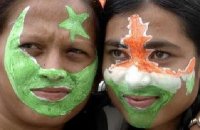
Traditional Food, Medicine & Biodiversity
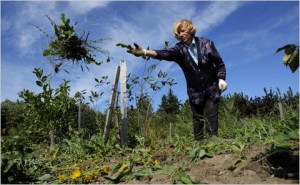
The N.I. Vavilov Institute of Plant Industry
Nikolai Ivanovich Vavilov (Russian: Николай Иванович Вавилов) was a prominent Russian and Soviet botanist and geneticist best known for having identified the centres of origin of cultivated plants. He devoted his life to the study and improvement of wheat, corn, and other cereal crops that sustain the global population. While developing his theory on the centres of origin of cultivated plants, Vavilov organized a series of botanical-agronomic expeditions, collected seeds from every corner of the globe, and created in Leningrad the world’s largest collection of plant seeds. Read More: > HERE <
The Convention on Biological Diversity (CBD), known informally as the Biodiversity Convention, is an international legally binding treaty. The Convention has three main goals: 1. conservation of biological diversity (or biodiversity);2. sustainable use of its components; and 3. fair and equitable sharing of benefits arising from genetic resources. In other words, its objective is to develop national strategies for the conservation and sustainable use of biological diversity. It is often seen as the key document regarding sustainable development. Read More: >HERE<
Ensuring that the genetic diversity of the world’s food crops is preserved for future generations is an important contribution toward the reduction of hunger and poverty in developing countries. This is where the greatest plant diversity originates and where the need for food security and the further development of agriculture is most urgent.
About VIR: “The scientific network of VIR includes the institute’s headquarters with 9 plant resources departments, 13 fundamental research laboratories, and 12 experiment stations in different geographic zones of Russia. Its chief activities are Plant Genetics Resources (PGR) collections, conservation and study.”
This recent news item was originally reported on Science Magazine’s Science Insider news feed. Earlier reportage on this story came from The Scientist blog. Top Photo: Alaska wild “berries” from the Innoko National Wildlife Refuge; U.S. Fish and Wildlife Service employee (public domain). Bottom Photo: VIR, Pavlosk Exp. Station http://www.greendump.net
Last week, we described the plight of the Russian Pavlovsk Experimental Station: Plans for a housing complex threaten some 5,000 rare plants, including varieties found nowhere else on the planet. A court judgment last week meant that only the president or prime minister could save the plants, which scientists said would take years to relocate. Now government telegrams and a presidential tweet hint that the plants might have a chance. http://blogs.discovermagazine.com
Russia Defers Razing of Seed Repository – modest reprieve for a seed bank that is home to the world’s largest collection of European fruits and berries. http://green.blogs.nytimes.com
The Vavilov Institute in Russia is the oldest seed bank in the world with a collection of over 325,000 samples of seed. Video from The Vavilov Institute from The Seed Hunter on National Geographic Channel http://natgeotv.com
Vavilov Institut Alblinse, Russian Housing Plan Threatens Seed Bank
The Institute of Plant Industry http://www.vir.nw.ru/ was established in 1921. Nikolai Vavilov was the head of this institute from 1924 to 1936 and had, and still has, the world’s largest collection of plant seeds. During the early 1930s, he became the target of the Lysenkoist debate and was exiled. In 2010 the plant collection at the Pavlovsk Experimental Station was to be destroyed to make way for luxury housing
IRRI http://irri.org Rice Research is a nonprofit research and education center established to reduce poverty and hunger, improve the health of rice farmers and consumers, and ensure environmental sustainability
Navdanya http://www.navdanya.org is a network of seed keepers and organic producers spread across 16 states in India.Navdanya has helped set up 54 community seed banks across the country, trained over 500,000 farmers in seed sovereignty, food sovereignty and sustainable agriculture over the past two decades, and helped setup the largest direct marketing, fair trade organic network in the country.
ARCHE NOAH: http://www.arche-noah.at Wir sehen unsere Arbeit als Antwort auf die restriktive globale Saatgutpolitik. Die Vielfalt an Kulturpflanzen ist Lebensgrundlage für kommenden Generationen. Und Lebensqualität für uns alle ! Wir sind ein Verein, der sich seit fast 20 Jahren für den Erhalt alter Kulturpflanzen einsetzt, mit über 8.000 Mitgliedern, Förderern und aktiven ErhalterInnen.
Svalbard Global Seed Vault – Cultural plants for the future. http://www.regjeringen.no Since the climate conditions change so rapidly, it is extremely important to ensure the genetic diversity of all the cultural plants of the world. In these genes, we will find the necessary qualities to make effective cultural plants in the future. This is absolutely necessary to secure a satisfactory food supply for the global population. Within the next 40 years, the world’s food production must be doubled, says the Norwegian minister of agriculture and food, Lars Peder Brekk.
Was wären die Schwaben ohne ihre Linsen? Trotzdem stellten Ende der 50er Jahre die letzten Landwirte “auf der Alb” den Anbau von Linsen ein, da die Importe zu billig waren und den Verbrauchern egal war, woher ihre Linsen kamen. Im Pflanzenbau herrschte damals der Zeitgeist “höher, schneller und immer mehr”. Hauptsache, der Ertrag von Weizen, Mais und Kartoffeln stieg. Egal, wie viel “Chemie” dazu auf den Acker kam. Diese Ideologie war den hiesigen Bio-Bauern schon immer ein Dorn im Auge.
Außerdem vermissten sie ihre Heimatfrucht aus der Kindheit: “Die alten Bauern bei uns in der Gegend haben uns erzählt, wie sie noch Linsen angebaut haben, zusammen mit Gerste ( GERSTE IM AYURVEDA ) und Hafer, als Stützfrucht für die zarten Pflanzen. Beim Linsen essen haben wir davon geträumt, wieder Alb-Linsen auszusäen”, erinnert sich Woldemar Mammel. Der Bioland-Bauer aus Lauterach auf der Alb baut bereits seit den 80er Jahren wieder Linsen an und begeisterte auch andere für seine Idee. Mittlerweile machen elf Bäuerinnen und Bauern in der “Öko-Erzeugergemeinschaft «Alb-Leisa»” mit und bewirtschaften 30 Hektar mit Albleisen.
Unterstützung bekommen sie von anderen Verfechtern guter Esskultur: Vor zwei Jahren hat Slow Food Deutschland die Alb-Linse in die “Arche des Geschmacks” aufgenommen, um dieses traditionelle landwirtschaftliche Erzeugnis der Schwäbischen Alb vor dem Vergessen zu retten. Die Sache hat nur einen Haken: Die original schwäbischen Alb-Linsen waren bis vor kurzem unauffindbar und so mussten sich die Bio-Bauern mit französischen und italienischen Sorten behelfen. “Niemand hatte es für nötig gehalten, diese einzigartigen, im Bundessortenregister eingetragenen Linsensorten aufzubewahren”, beklagt Mammel.
Doch die verschollenen Linsen berührten auch andere schwäbische Herzen: 2006 machten sich unabhängig voneinander der private Pflanzenzüchter Klaus Lang und Klaus Amler von der Stuttgarter Agentur Ökonsult auf die Suche. Beide werden ein Jahr später in Russland fündig! Das Wawilow-Institut in St. Petersburg, das seit 1925 für die Genvielfalt der Nutzpflanzen kämpft, hat die zwei Sorten aufbewahrt.
RICE: Rice is first mentioned in the Yajur Veda (c. 1500-800 BC) and then is frequently referred to in Sanskrit texts. Today, the majority of all rice produced comes from India, China, Japan, Indonesia, Thailand, Burma, and Bangladesh.
Asian farmers still account for 92-percent of the world’s total rice production. Rice is grown in all parts of India. Genetics shows that rice was first domesticated in the region of the Yangtze River Valley. Read More: > HERE <
- www.pranapositive.com/shm/Save Herbal Medicine
- Articles on Biodiversity
- IRRI Rice Research/Climate Change /Bioversity/Eco Crises
- www.intlcss.org International Crop Science Society
- ARCHE NOAH, Erhaltung/Verbreitung Kulturpflanzenvielfalt
- Meet UN International Day 2010 of Biodiversity at fb
- Meet Global Biodiversity Protection at fb
- www.ienearth.org Indigenous Environmental Network at fb
- www.navdanya.org studies friends fans at fb
- www.ecobuddhism, friends and studies at fb
- Greenpeace China 绿色和平 綠色和平 at fb
- Meet SLOW FOOD , friends, pages at fb
- Meet TIBETAN TSAMPA Group and Friends at fb
- http://en.wikipedia.org/wiki/Farmers’_suicides_in_India
- http://en.wikipedia.org/wiki/Europ.Directive Trad.Herbal_Med.Products
- Meet COP 16 UN Conference, friends, studies, fans at fb
- Meet International Year of Biodiversity, friends, fans at fb
- Meet NaturalNews.com at facebook
NaturalNews.com is an independent news resource that covers the natural health and wellness topics that empower individuals to make positive changes in their personal health. NaturalNews offers uncensored news that allows for healthier choice.
New York College & World Found. of TCM
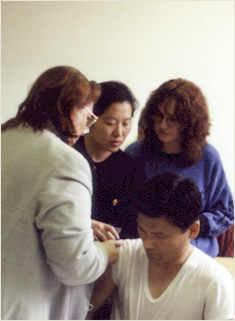
Traditional Chinese Medicine, also known as TCM, includes a range of traditional medicine practices originating in China. Although well accepted in the mainstream of medical care throughout East Asia, it is considered an alternative medical system in much of the Western world. TCM practices include such treatments as Chinese herbal medicine, acupuncture, dietary therapy, and both Tui na and Shiatsu massage. Qigong and Taijiquan are also closely associated with TCM.
Much of the philosophy of traditional Chinese medicine derives from the same philosophy that informs Taoist and Buddhist thought, and reflects the classical Chinese belief that the life and activity of individual human beings have an intimate relationship with the environment on all levels. Read More: > HERE <
New York College of Traditional Chinese Medicine (NYCTCM) by Dr. Chi Chow was started in 1996. Dr. Chow felt that the New York City area had need for a school which taught Traditional Chinese Medicine (TCM) much as it is taught in China, and which at the same time could help students relate this approach to Western medical practice. Her vision included small classes, master-apprentice type teaching relationships in clinic, and the flexibility to accommodate students’ schedules by offering classes mostly on weekends. From its first trimester in Spring of 1996, NYCTCM has embodied this approach.
The mission of the New York College of Traditional Chinese Medicine is to prepare compassionate practitioners who are solidly grounded in the tradition of Chinese medicine, who are able to integrate this tradition within the Western health care system, and who have a spirit of innovation that enables them to adapt a 4000-year-old medicine to 21st-century needs.
NYCTCM Core Values: COMPASSION – In addition to knowledge of TCM theory and mastery of techniques necessary to apply that theory, NYCTCM graduates will bring the emotional qualities of empathy, respect and compassion to all their treatment sessions. TRADITION – NYCTCM graduates will have a thorough understanding of and deep respect for traditional Chinese principles of treatment, including their cultural and philosophical context. INTEGRATION – NYCTCM graduates will have a fundamental understanding of the Western medical approach, and will be able to integrate their practice of TCM within the Western health care system. INNOVATION – NYCTCM graduates will have a spirit of innovation that enables them to adapt a 4000-year-old medicine to 21st-century needs.
The Traditional Chinese Medicine World Foundation is a not-for-profit organization dedicated to educating the public and health-care practitioners about classical traditional Chinese medicine (TCM) and natural self-healing. Through our educational programs, publications, and practitioner resources, we hope to advance the practice and integration of authentic traditional Chinese medicine in Western society.
The TCM World Foundation’s objectives include:* To serve as a source of information on the philosophy, principles, theories, modalities, and practice of authentic TCM and the classical Chinese internal martial arts, such as Qigong and Taiji.* To support the practice of authentic TCM to widen health-care options for the public.* To support an expanded concept of health and healing in contemporary medicine.* To educate individuals on the steps they can take in prevention and self-healing.* To foster a dialogue between Western and Eastern medical schools and communities in the US to improve the quality of training for practitioners of TCM.* To facilitate forums for interdisciplinary collaborations.* To foster balance and harmony in the individual, the community, society, and the world as a whole.
The Foundation’s educational efforts focus on the full system of TCM, which includes: herbal therapy, acupuncture, acupressure, internal martial arts, the prescription of foods for healing, and Chinese psychology. The educational components of the Foundation are geared toward the general public and health-care professionals as well as organizations from both the mainstream and complementary and alternative medicine communities.
Nan Lu, OMD, LAc, is the founding director of the Traditional Chinese Medicine World Foundation and its sister organization, the Tao of Healing. Dr. Lu holds a doctorate from Hubei College of Traditional Chinese Medcine, Hubei, China, and is a New York State-licensed acupuncturist. Classically and university-trained, Dr. Lu is a master herbalist as well as an internationally recognized Taiji expert and Qigong master and the best-selling author of three TCM books published by Harper Collins.
His continuing educational efforts also include the following web sites: www.tcmworld.org, www.tcmconference.org, www.breastcancer.com. http://www.youtube.com/user/masternanlu
Possessing a gift of cross-cultural communication, Dr. Lu lectures internationally and frequently partners with doctors of Western medicine using a preventive and complementary approach. His specialties include women’s health, cancer and immune system disorders and stress management.
UYGHUR – Trad. Medicine, Arts & Culture
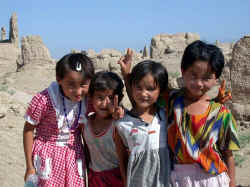
www.unpo.org/Uyghuren Nederland (VUN)
http://turkmenfriendship.blogspot.com
The Uyghur (Uyghur: ئۇيغۇر, Uyghur?; simplified Chinese: 维吾尔; traditional Chinese: 維吾爾; pinyin: Wéiwú’Ä�r; are a Turkic ethnic group living in Eastern and Central Asia. Today Uyghurs live primarily in the Xinjiang Uyghur Autonomous Region in the People’s Republic of China. An estimated 80 % of Xinjiang’s Uyghurs live in the southwestern portion of the region, the Tarim Basin. Large diasporic communities of Uyghurs exist in the Central Asian countries of Kazakhstan, Kyrgyzstan, and Uzbekistan. Smaller communities are found in Mongolia, Pakistan, Afghanistan, Turkey, Russia and Taoyuan County of Hunan province in south-central Mainland China. Uyghur neighborhoods can be found in major cities like Beijing, Shanghai, Sydney, Washington D.C, Munich, Tokyo, Toronto, Istanbul. Read More: > HERE <
Erkin Alptekin (born on July 4, 1939 in East Turkistan) is a noted international advocate for the rights of native and indigenous people. Among the organizations he has led are the Unrepresented Nations and Peoples Organization, of which he was formerly the chairman, and the World Uyghur Congress, of which he was the first president. Read More: > HERE <
Erkin Alptekin is one of the foremost human rights advocates for the Uighur people of Eastern Turkestan, also known as the Xinjiang Autonomous Region of the People’s Republic of China. Mr. Alptekin was employed by Radio Free Europe/Radio Liberty from 1971 to 1994. He is one of the founders of the Unrepresented Nations and People’s Organization (UNPO), and currently serves as its General Secretary. www.dalailamafoundation.org
Uyghur Medicine – The Uyghurs had an extensive knowledge of medicine and medical practice. Sung (Song) Dynasty (906-960) sources indicate that an Uyghur physician, Nanto, traveled to China, and brought with him many kinds of medicine not known to the Chinese.
There are 103 different herbs for use in Uyghur medicine recorded in a medical compendium completed by Li Shizen (1518-1593), a chinese medical authority. The Tartar scholar Rashit Rahmeti Arat has written two valuable books in German entitled Zur Heilkunde der Uighuren (Medical Practices of the Uygurs) , in 1930 and 1932, relying on Uyghur documents discovered in East Turkestan. In his book, Arat gives important information on Uyghur medicine and medical treatment.
Among other documents he studied he found a very important sketch of a man with an explanation of acupuncture. Relying on this document, some western scholars claim that acupuncture was not a Chinese, but a Central Asian invention and the Uyghurs perfected the method. Traditional Uyghur medicine, which can be traced back for more than 2,700 years through written records, is still very popular in East Turkestan today.
Tibetan Buddhist Medicine/Ancient Uyghur Civilization
Medicine – Tatar scholar, professor Reşit Rahmeti Arat in Zur Heilkunde der Uighuren (Medical Practices of the Uyghurs) published in 1930 and 1932, in Berlin, discussed Uyghur medicine. Relying on a sketch of a man with an explanation of acupuncture, he and some Western scholars suspect that acupuncture was not a Chinese, but an Uyghur discovery. Today, traditional Uyghur medicine can still be found at street stands. Similar to other traditional medicine, diagnosis is usually made through checking the pulse, symptoms, and disease history, and then the pharmacist pounds up different dried herbs, making personalized medicines according to the prescription. Modern Uyghur medical hospitals adopted the Western medical science and medicine and adopted Western pharmaceutical technology to discover new and produce traditional medicines.
- www.unpo.org , UNESCO – World Heritage
- Articles on Traditional Chinese Medicine <
- Articles on Traditional Tibetan Medicine <
- Gesellschaft für bedrohte Völker (GfbV), friends at fb <
- Meet STOP China’s GENOCIDE on the Uighur people, friends at fb <
- Meet EAST TURKESTAN UYGHURESTAN, friends, fans at fb <
- Meet Human Rights Watch, friends, fans at fb <
- Council for a Parliament of the World’s Religions (CPWR) at fb <
- The International Ecotourism Society (TIES)at fb <
TAOISM – Taoist Tai Chi Society™
Taoism (or Daoism) refers to a variety of related philosophical and religious traditions that have influenced Eastern Asia for more than two millennia, and have had a notable influence on the western world particularly since the 19th century. The word 道, Tao (or Dao, depending on the romanization scheme), literally translates as, „path“ or „way“ (of life), although in Chinese folk religion and philosophy it carries more abstract meanings. Taoist propriety and ethics emphasize the Three Jewels of the Tao: compassion, moderation, and humility, while Taoist thought generally focuses on nature, the relationship between humanity and the cosmos (天ä��相应), health and longevity, and wu wei (action through inaction), which is thought to produce harmony with the Universe. Read More: > HERE <
Tao (pronounced „Dow“) can be roughly translated into English as path, or the way. It is basically indefinable. It has to be experienced. It „refers to a power which envelops, surrounds and flows through all things, living and non-living. The Tao regulates natural processes and nourishes balance in the Universe. It embodies the harmony of opposites (i.e. there would be no love without hate, no light without dark, no male without female.)“
The founder of Taoism is believed by many religious historians to be Lao-Tse (604-531 BCE), whose life overlapped that of Confucius (551-479 BCE). (Alternative spellings: Lao Tze, Lao Tsu, Lao Tzu, Laozi, Laotze, etc.). However other historians suggest that he is a synthesis of a number of historical figures. Others suggest that he was a mythical figure. Still others suggest that he lived in the 4th century BCE.
He was searching for a way that would avoid the constant feudal warfare and other conflicts that disrupted society during his lifetime. The result was his book: Tao-te-Ching (a.k.a. Daodejing). Others believe that he is a mythical character.
A Taoist priest (Sai Kong) chanting the scripture in Hokkien for the Nine Emperor Gods Festival in Tao Bo Keong, Penang.
Taoism started as a combination of psychology and philosophy but evolved into a religious faith in 440 CE when it was adopted as a state religion. At that time Lao-Tse became popularly venerated as a deity. Taoism, along with Buddhism and Confucianism, became one of the three great religions of China. With the end of the Ch’ing Dynasty in 1911, state support for Taoism ended. Much of the Taoist heritage was destroyed during the next period of warlordism. After the Communist victory in 1949, religious freedom was severely restricted. „The new government put monks to manual labor, confiscated temples, and plundered treasures. Several million monks were reduced to fewer than 50,000“ by 1960. 3 During the cultural revolution in China from 1966 to 1976, much of the remaining Taoist heritage was destroyed. Some religious tolerance has been restored under Deng Xiao-ping from 1982 to the present time.
Taoism currently has about 20 million followers, and is primarily centered in Taiwan. About 30,000 Taoists live in North America; 1,720 in Canada (1991 census).
Taoism has had a significant impact on North American culture in areas of „acupuncture, herbalism, holistic medicine, meditation and martial arts…
The Yin Yang symbol: This is a well known Taoist symbol. „It represents the balance of opposites in the universe. When they are equally present, all is calm. When one is outweighed by the other, there is confusion and disarray.“ One source explains that it was derived from astronomical observations which recorded the shadow of the sun throughout a full year. The two swirling shapes inside the symbol give the impression of change — the only constant factor in the universe. One tradition states that Yin (the dark side) represents the breath that formed the earth. Yang (the light side) symbolizes the breath that formed the heavens.
One source states: „The most traditional view is that ‚yin‘ represents aspects of the feminine: being soft, cool, calm, introspective, and healing… and „yang“ the masculine: being hard, hot, energetic, moving, and sometimes aggressive. Another view has the ‚yin‘ representing night and ‚yang‘ day.
Another source offers a different definition: A common misconception in the west is that „…yin is soft and passive and yang is hard and energetic. Really it is yang that is soft and yin that is hard, this is because yang is energetic and yin is passive. Yin is like a rock and yang is like water or air, rock is heavy and hard and air is soft and energetic.“
Allan Watts, describes the yin and yang as negative and positive energy poles: „The ideograms indicate the sunny and shady sides of a hill….They are associated with the masculine and the feminine, the firm and the yielding, the strong and the weak, the light and the dark, the rising and the falling, heaven and earth, and they are even recognized in such everyday matters as cooking as the spicy and the bland.“
However, since nothing in nature is purely black or purely white, the symbol includes a small black spot in the white swirl, and a corresponding white spot in the black swirl.
Ultimately, the ‚yin‘ and ‚yang‘ can symbolize any two polarized forces in nature. Taosts believe that humans often intervene in nature and upset the balance of Yin and Yang. Full Article: http://www.religioustolerance.org
- www.wudanggongfu.com
- Dein Ayurveda Net:…. Articles on TCM <
- WU XING, 5 Elements, Roots of Chinese Medicine <
- Meet Wudang Conception, studies, friends at fb <
- Meet International Taoist Tai Chi Society, friends and studies at fb <
- Meet Traditional Chinese Medicine, studies, friends and fans at fb <
- Meet Lao Tzu, studies, friends, fans at fb <
- Council for a Parliament of the World’s Religions (CPWR) <
Western Herbs from the TCM Perspective
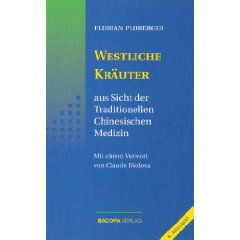
Traditional Chinese Medicine, also known as TCM, includes a range of traditional medicine practices originating in China. Although well accepted in the mainstream of medical care throughout East Asia, it is considered an alternative medical system in much of the Western world.
TCM practices include such treatments as Chinese herbal medicine, acupuncture, dietary therapy, and both Tui na and Shiatsu massage. Qigong and Taijiquan are also closely associated with TCM.
TCM claims to be rooted in meticulous observation of nature, the cosmos, and the human body, and to be thousands of years old. Major theories include those of Yin-yang, the Five Phases, the human body Meridian/Channel system, Zang Fu organ theory, six confirmations, four layers, etc. Read More: > HERE <
Western Herbs from the Traditional Chinese Medicine Perspective
Autor: Ploberger Florian
This book will be published 2011. You can order it now. Traditional Chinese Medicine (TCM) and thus also Chinese phytotherapy is becoming more and more popular. Therefore, so-called Western herbs, which are available to us in the West, are described and therapeutically applied according to TCM criteria. This book describes about 150 herbs such as rosemary, basil, ladys mantle, fumatory, dandelion etc. Besides their English names, pharmaceutical, botanical and German names are also listed for each herb. In addition, a description of the parts of the plants used, their taste, temperature effect, the organs involved and doses is provided as well as detailed descriptions of the actions and individual fields of application of individual herbs.
It is a translation of the 6th revised edition of the book Westliche Kräuter aus Sicht der Traditionellen Chinesischen Medizin.
The book „Westliche Kräuter aus Sicht der Traditionellen Chinesischen Medizin“ (Western Herbs from the Traditional Chinese Medicine Perspective) has been widely published in Europe and its 6th revised edition has already appeared within a few years. It is now being translated into English due to strong demand.
The book: Traditional Chinese Medicine (TCM) and thus also the Chinese phytotherapy is becoming more and more popular. Therefore so-called Western herbs, which are available to us in the West, are described and therapeutically applied according to TCM criteria. This book describes about 150 herbs such as rosemary, basil, ladys mantle, fumatory, dandelion etc. Besides their English names, pharmaceutical, botanical and German names are also listed for each herb. In addition, a description of the parts of the plants used, their taste, temperature effect, the organs involved and doses is provided as well as detailed descriptions of the actions and individual fields of application of individual herbs.
This book serves as an important source of information both for beginners and for experienced therapists.
The author: Dr. med. univ. Florian Ploberger B. Ac., BA Vienna.
Main fields: Traditional Chinese Medicine (TCM) and Tibetan Medicine.
Education: Medical studies and internship in Vienna, study of acupuncture at the Austrian Society of Acupuncture and Auriculotherapy in 1996; three years of TCM studies with Claude Diolosa until 1998; Bachelor in Acupuncture from K.S. University in the USA 1999; four semesters of Sinology studies and numerous study visits to China (TCM University in Beijing, TCM University in Chengdu) and India (LTWA Library of Tibetan Works & Archives). Since 2004 studies of Tibetology at the Vienna University (Bachelor of Arts in the Languages and Cultures of South Asia and Tibet, 2009).
Teaching and publications in the fields of TCM and Tibetan Medicine since 1997.
Head of the Scientific Advisory Council of the Bacopa Centre of Learning in Upper Austria and President of the Austrian Educational Society for Traditional Chinese Medicine (ÖAGTCM) (after three years of further education physicians are awarded the diploma Chinese Diagnostics and Pharmacotherapy by the Austrian Chamber of Physicians).
Regular lectures on Western herbs from the TCM perspective upon invitation of the Austrian Chamber of Pharmacists.
In 2007 he was publishing editor of Die Grundlagen der Tibetischen Medizin (a translation of the book Fundamentals of Tibetan Medicine of Men-Tsee-Khang Publication).
It was a great honour and pleasure for him when in summer 2009 he was officially asked by Dr. Dawa, the Director of the > Men-Tsee-Khang < (Tibetan Medical and Astrology Institute of H.H. the XIVth Dalai Lama in Dharamsala, Northern India) to translate the first two parts of > rGyud-bZhi < , the most important work of Tibetan Medicine (The Basic Tantra and The Explanatory Tantra from the Secret Quintessential Instructions on the Eight Branches of the Ambrosia Essence Tantra).
Since the 12th century this text has been serving as the foundation stone in the training of Tibetan medical practitioners, and is still being learned and memorised today.
Currently, as university reader, he gives a weekly lecture on various subjects of Tibetan Medicine at Vienna University, and every year he spends several months in Dharamsala.
ISBN: 978-3-901618-94-9
The Codex Alimentarius – (Latin for „food code“ or „food book“) is a collection of internationally recognized standards, codes of practice, guidelines and other recommendations relating to foods, food production and food safety. Its name derives from the Codex Alimentarius Austriacus.
Its texts are developed and maintained by the Codex Alimentarius Commission, a body that was established in 1963 by the Food and Agriculture Organization of the United Nations (FAO) and the World Health Organization (WHO).
The Commission’s main aims are stated as being to protect the health of consumers and ensure fair practices in the international food trade. The Codex Alimentarius is recognized by the World Trade Organization as an international reference point for the resolution of disputes concerning food safety and consumer protection. Read More: > HERE <
Herbs in Trad. Chinese Medicine / ChemFoods, and the threat to our freedom of health
Meet NaturalNews.com at facebook <
NaturalNews.com is an independent news resource that covers the natural health and wellness topics that empower individuals to make positive changes in their personal health. NaturalNews offers uncensored news that allows for healthier choice.
